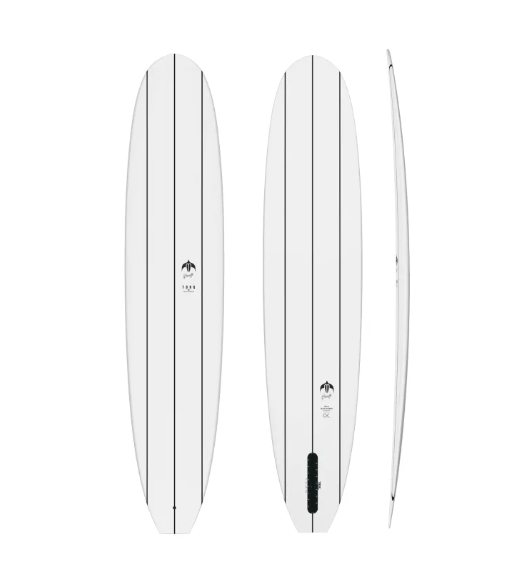Description
9’2 Torq Delpero Classic TEC – Single Fin – White
CROSS STEP WITH GRACE, TURN WITH EASE.
Alain Minvielle has extensive shaping experience in California and a fine appreciation for the flow and glide of the classic style. With Edouard’s input they have created a Classic shape inspired by the classic 60’s model of Longboarding (no edge) while adding some more modern bottom line to find the perfect cruiser with surprising manœuvrability.
The critical part of this design is in the rocker and volume distribution – the curve of the rocker will allow you to maintain noserides in the pocket while gliding in small conditions as much as in larger waves. Finally, the unique distribution of volume through the board, from a thick nose to a thin tail, will allow you to cross step with grace and turn with ease.
| Dimensions |
Volume |
| 9’2 x 23” x 3 1/8” |
77.2 ltr |
TEC – TORQ EPOXY COMPOSITE
For lengths of 8’6 and over we have introduced a T-stringer and UD carbon triple strips on the deck and bottom for a new level of torsional strength. The Torq longboard technology is incredibly strong, light and responsive.
With 3 layers of glass on the deck and 2 layers on the base, these are super strong, light and feel fast under your feet.
Brand
Torq-surfboards
Launched in 2012, torq surfboards created a new standard in the epoxy surfboard market, offering an unmatched combination of strength and performance. This year sees the innovation step up a gear, with new shapes, new graphics and new technologies. The torq range now offers 4 types of boards for all levels of surfer.
Torq TEC; Torq Epoxy Composite offers our user friendly performance shapes in our most advanced epoxy lay-up to date. Using a mix of Biaxial, plain weave fibres and Carbon, these boards offer the best strength to weight ratio on the market.
Torq X-Lite is a brand new Epoxy technology developed specifically for performance boards. This is stronger and more Eco than a traditional PU/Polyester board. This new innovative technology is used exclusively on the Channel Islands model, the POD MOD
Torq Epoxy Technology or TET represents a revolution in Epoxy surfboard technology. Built using the latest in EPS/Epoxy materials; the Torq Epoxy Technology combines a lightweight EPS core with Biaxial fibreglass cloth, Epoxy resin and our unique Shield Skin.
Our Soft Deck board uses an additional PE deck skin over a full laminated core to offer a safe first time learning option in this durable easy surfing range.

Heeft u hulp nodig bij uw aankoop? Neem dan gerust contact met ons op
+3170 201 5153
info@noordzeeboardstore.nl
Contact formulier





